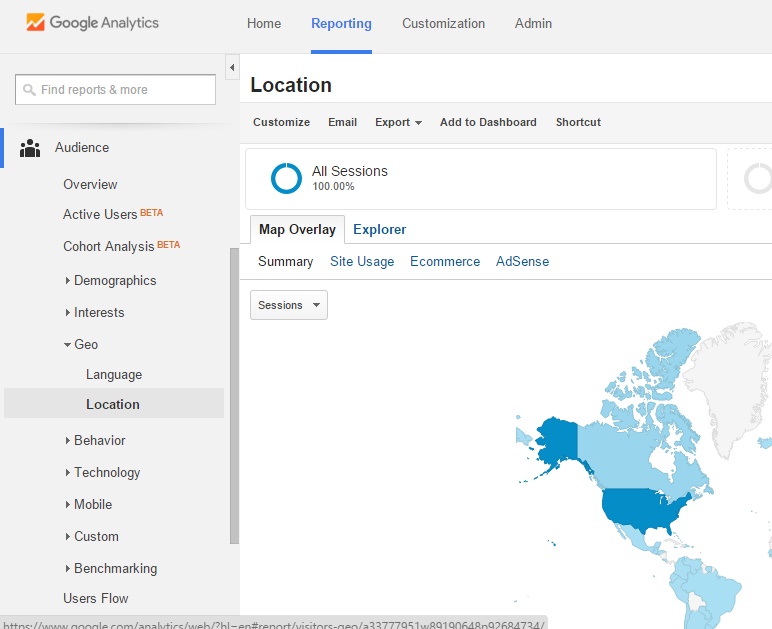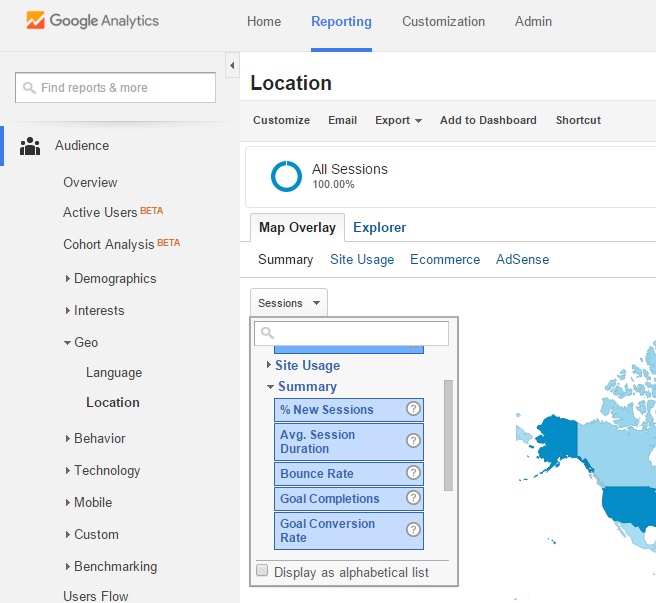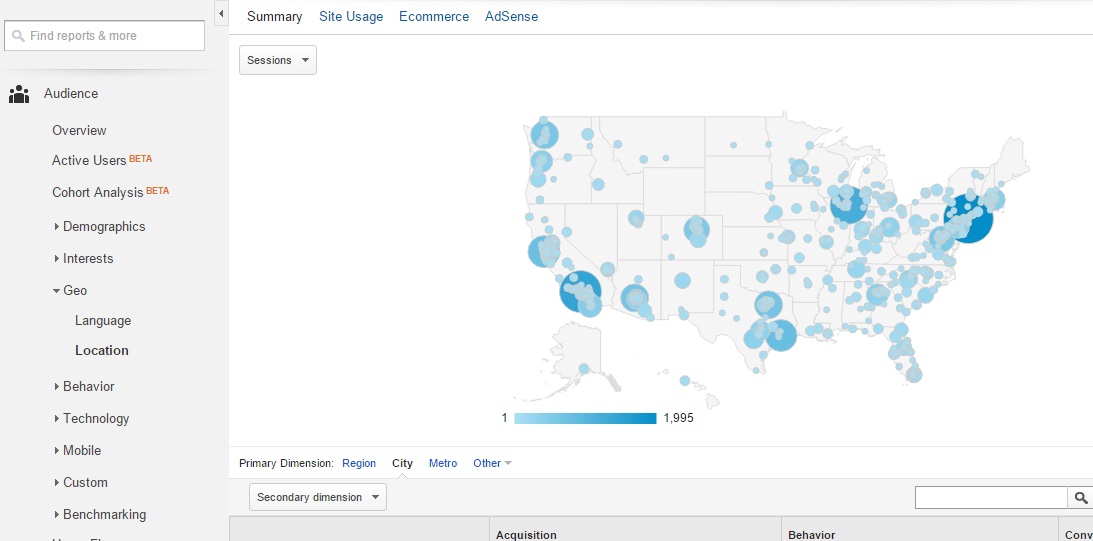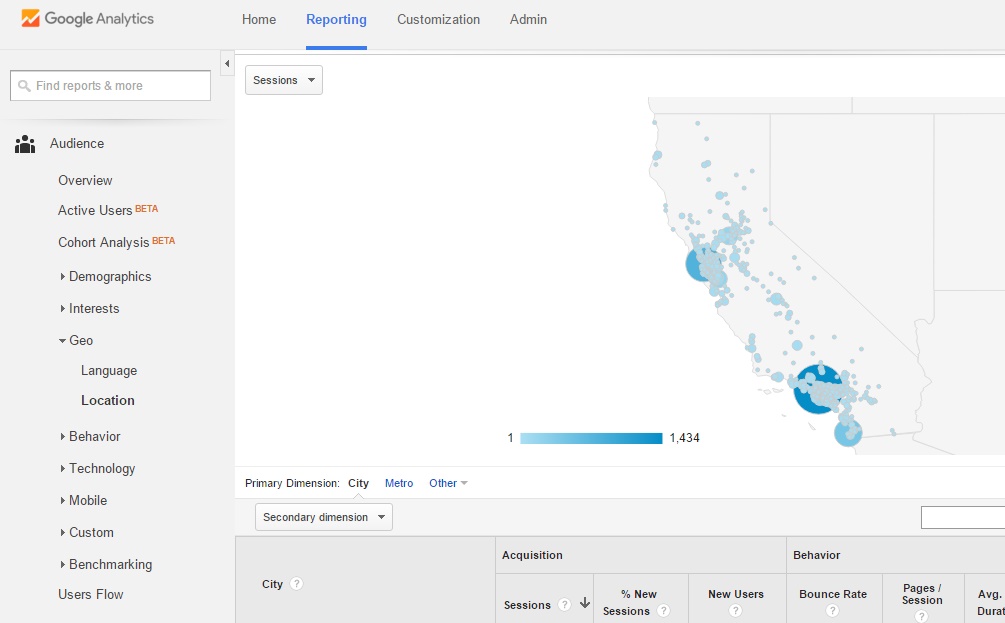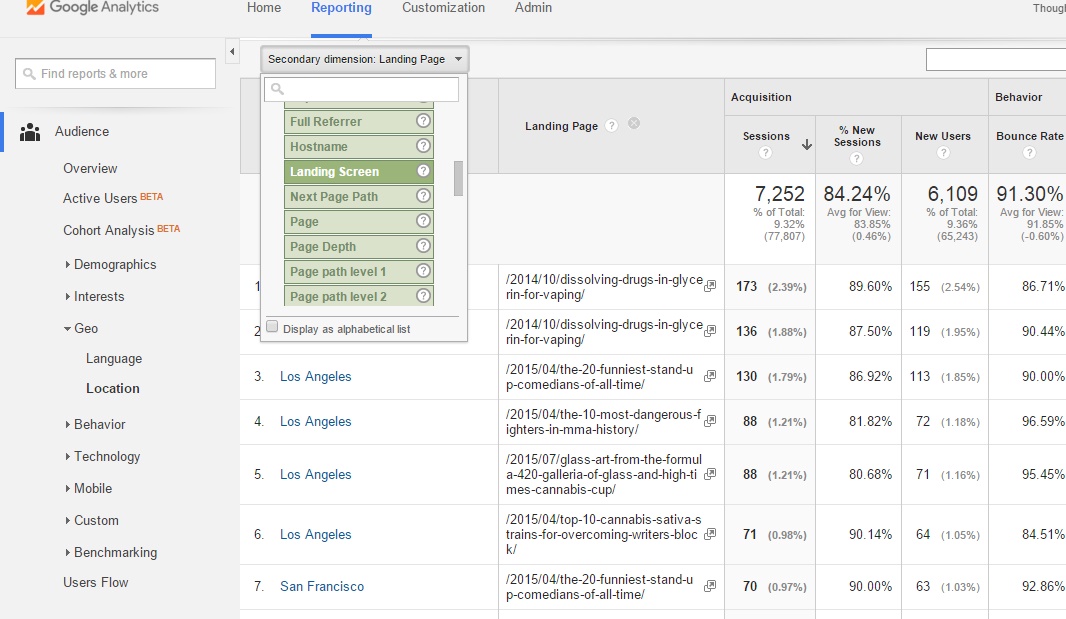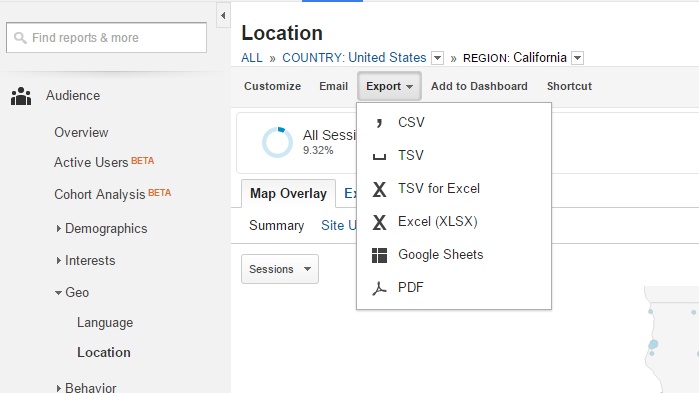Google Analytics, when paired with Google’s Webmaster Tools, has some powerful reports that allow site owners to view the effectiveness of any marketing campaign. I’ve already shown you how to sign up for Google Analytics and register it with Google My Business to localize data collection.
Next it’s time to integrate Webmaster Tools with Analytics. This is accomplished through Analytics, and Web Marketing Today has a great tutorial on how to link Webmaster Tools through Analytics. This article also describes an overview of how Analytics reporting can be used.
What I’m going to focus on is how to refine reporting by geographic region, and what can be done with the information.
Geolocating Audiences in Google Analytics
Within the Google Analytics Dashboard, expand Audience by Clicking on it. Then select Geo and Location to view a Map Overlay showing the location of your website’s traffic under the Reporting tab like shown in the below screenshot.
Define Sessions
Initially you’ll be shown all sessions all over the world. By clicking the Sessions drop down, you can choose what types of sessions to view. It’s possible to target Bounce Rate, New Users, and even AdSense-specific reports.
Refine Geolocation
To target specific locations, first narrow down the country. Clicking the picture of the United States on the default map will zoom the map in to only show the United States.
Once the map is focused on the U.S., there are two methods of retrieving the type of data I like to look at. Changing the Primary Dimension to City shows the below map where you get a full visual of where people are accessing your site from. You can also click your individual state to target only traffic from within the state.
Take a screenprint of this and save it for a variety of later uses by opening MS Paint and saving the picture of the map as a jpeg. Next, change the primary dimension to Metro in order to check localized search traffic.
Set Secondary Dimension
Under the Primary Dimension, select the menu for Secondary Dimension and type “Keyword” in the search field to select Keyword from the menu. This will add the keyword field to the data. If you’d like to run multiple reports to find Acquisition and Referal information, that’s as simple as adjusting the Secondary Dimension and exporting a new report.
From here, all that’s needed is to export the report to an external spreadsheet app for sorting.
Export Google Analytics Data to Spreadsheet
At the top of the page, click the “Export” button. For businesses using database programs like SQL or Access to organize data, a comma-delineated CSV file will work (space-delineated TSV can work as well, depending on the SQL importing parameters).
Everyone else manually sorting through data need to do so on a spreadsheet. Choose either Excel XLSX or Google Sheets (depending on which program your business uses), and export the data.
Format and Sort Spreadsheet Data
In the spreadsheet, click the arrow at the top left to select all data, then click the line between A and B to automatically resize the cells. You can then easily sort through this data for an overview of what keywords are popular in which geographic regions.
By setting parameters in your spreadsheet program, you can target specific keywords and/or regions as well. By tracking and analyzing this data over time, you’ll have a fantastic idea of how your website is doing and can easily target specific keywords and locations.
Use this data to refine Adword targeting and set local campaigns to build on an existing audience. It’s also helpful to see how your brand/business is seen by the general public. You may carry 100 flavors of cake, but if red velvet is all anyone’s ordering, you know to focus on that.
Also, you’ll notice much of the keywords in my example are set at (Not set) or (Not provided). This is because the site I used for an example doesn’t have the HTTPS encryption enabled, so Google won’t pass along the search information as often. There are still a few thousand keywords to work with – more than enough to gain insight as to how the site is doing.
Google’s Analytic tools are powerful and can retrieve all the data necessary for any timeframe. All you have to do as a small business is collect it and understand what you’re looking at. We can help.

